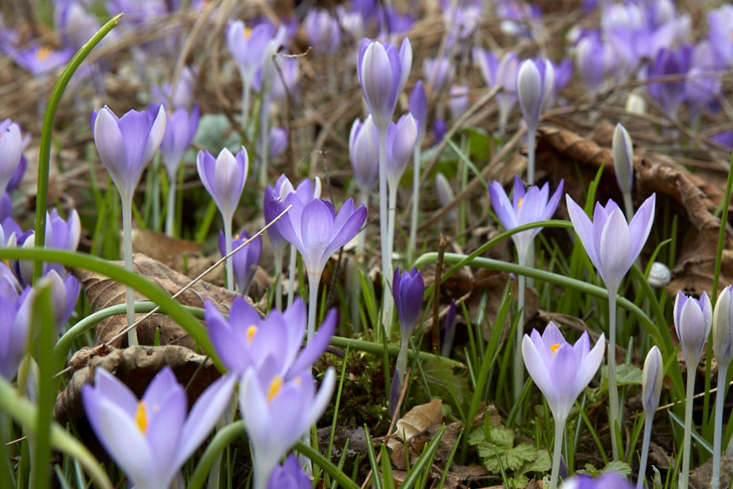When September rolls around, sadness that summer is over mixes with happiness that life can slow down just a bit—even for a month—as kids return to school and before the holiday season kicks in. Out in the garden, plants heave a sigh of relief from summer’s intense sun and visibly show signs of wear and tear, letting us know that they need a little extra tending to right now and would love help transitioning into cooler temperatures. Your garden may also be in the throes of its last hurrah, producing ripe edibles or pretty petals, but secretly eager to downshift and get ready to be put to bed in the upcoming months.
Here are eight garden chores to help your garden ease into fall.
1. Plan for next spring.

As crazy as it may seem with fall knocking on the door, now is the time to be thinking of spring and planting spring-blooming bulbs for a spectacular display next year. Easy and smart choices are daffodils, hyacinths, and crocus. (See Your First Garden: What You Need to Know Before You Plant Bulbs and The Garden Decoder: What Does It Mean to ‘Naturalize’ Bulbs? for tips.)
2. Water—but don’t fertilize—your shade plants.

Give some extra attention to your shade-loving camellias and rhododendrons right now to make sure the roots are well watered so that next year’s buds successfully develop. And wait to fertilize these beauties until their active growth period in the spring because feeding them now generates late-season new growth that’s vulnerable to damage from upcoming freezing temperatures.
3. Deadhead flowers—but not all of them.

Continue to deadhead annuals and flowering perennials to keep them blooming until the first frost, paying special attention to your dahlias and shrub roses to keep the blooms in motion. And thinking ahead, leave some flowers to go to seed, such as those adorning rudbeckias and echinaceas, so that hungry birds will have some tasty seed treats to munch on in the fall and winter.
4. Harvest your edibles.

Hopefully you’ve had a successful crop and if so, keep harvesting the fruits of your labor. And maybe this year, take up the art of freeze-drying, canning, or pickling so you can extend your harvest and the season. Also remember to clean up rotting fruit from the ground or mushy fruit left on trees as this can spread disease. And, last, don’t forget to harvest herbs for drying and freezing for use later in recipes.
5. Don’t stop planting.

Now is the time to plant a variety of cool-season, cinch-to-grow pretties such as calendula, cosmos, pansies, and chrysanthemums. Tip: Let your local nursery be your guide and see what’s new in the store. Make sure you choose container-grown plants that aren’t root-bound and bursting out of the bottom.
6. Prop up your pumpkins.

To help your pumpkins ripen for Halloween, remove leaves shadowing the fruit, plus raise your festive friends off the ground to prevent possible rotting. One trick is to set them on a piece of wood or leftover slate.
7. Consider a compost bin.

If you don’t already have a compost bin, consider building one now in preparation for the deluge of fallen leaves and spent plant material you will be collecting from your garden. Compost is stellar at returning valuable nutrients to your soil and acts as a wonderful slow-release organic fertilizer. Tip: Avoid putting diseased or infested plant material in your bin as the spores can overwinter and reinfect your plants in the spring when you use your compost in garden beds.
8. Turn your attention to cool-weather crops.

Despite the sun lowering itself slightly in the sky, the soil is still warm and toasty so there is still time to sow select edibles. And the bonus is that the flavor of many crops (think beets and carrots) get tastier due to the upcoming cold winter temperatures concentrating the sugars. Plants to grow now: snap peas, winter greens (chard, mustard and collards) also brassicas (cabbage, cauliflower and broccoli). And don’t forget about adding onions to your list. If you live in a cold climate grow your new crops under a cold frame in a green house. (See The Garden Decoder: What Is a’Cool-Season Crop?’)
N.B.: This post is an update; it was first published September, 2020.
For more on September garden chores, see:
- Gardening 101: How to Deadhead Flowers
- Gardening 101: Rhododendrons
- 10 Easy Pieces: Flower Bulbs for Forcing












Have a Question or Comment About This Post?
Join the conversation (1)